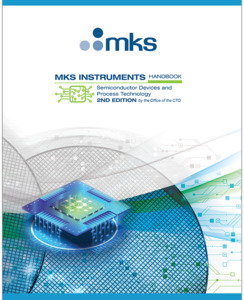Pirani Thermal Conductivity Vacuum Gauge Physics
Pirani gauges were first developed in the early 1900's. As noted earlier, the sensing element is a wire of known resistance and known temperature coefficient of resistance (i.e., how its resistance varies with temperature). The element forms one leg of a balanced Wheatstone bridge. When gas molecules collide with the heated element, they extract heat from it, changing its resistance which unbalances the bridge relative to its reference state. Since the number of collisions and hence the amount of heat transferred to the gas is proportional to the gas pressure, the voltage required to maintain the bridge in balance is proportional to the pressure.
Pirani gauges have limitations that must be recognized when they are used. Since different gases have differing abilities to transfer heat away from the filament (i.e., different specific heat capacities), the Pirani gauge response depends on the gas that is present in the system. Thus, users must calibrate the Pirani gauge for the expected residual gas in the system. At the same pressure, a system that has been purged with helium will yield a different Pirani gauge reading than one purged with nitrogen (see Figure 1 and Figure 2). Since the Pirani element operates at temperatures of between 100 and 150°C, care must be taken that reactive gases that can break down and deposit solid material on the element are excluded from the gauge. Should such deposits occur (or should corrosive gases react with the element), the accuracy of the Pirani will be diminished. Since the Pirani depends on heat dissipation from the element by the surrounding gas, the Pirani loses accuracy when the pressure drops below about 10-4 Torr where heat transfer is significantly reduced. At high pressures (10 Torr and above), the mean free path of gas molecules becomes reduced to a point where nonlinearities enter into the pressure-voltage relationship and reduce the gauge's sensitivity. Advanced Pirani gauges are constructed so as to permit convective forces within the gauge to assist molecular flow. These latter designs enable Pirani gauges to be used with good accuracy up to 760 Torr pressure. Pirani gauges are normally received calibrated for nitrogen and calibration curves are required for use with other gases. Pirani gauges are relatively fast with response to pressure changes occurring in a tenth of a second or less.
Figure 1. Pirani gauge actual pressure versus reading on a nitrogen calibrated gauge for various gases.
The relatively low cost, small size and good sensitivity of Pirani gauges make them the gauge of choice for routine vacuum measurements in the low to medium vacuum range. Their low accuracy (5% of reading) relative to other types of vacuum gauge limits their use to non-critical applications. Their sensitivity to reactive gases means that they must be isolated from process gas streams.
Figure 2. The response of a Pirani gauge to helium versus its response to nitrogen.
Related Topics
Vacuum Pressure Measurement
For additional insights into semiconductor topics like this, download our free MKS Instruments Handbook: Semiconductor Devices & Process Technology
Request a Handbook
 Ultra-High Velocity
Ultra-High Velocity